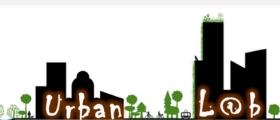
research areas
objectives
This research line aims to provide knowledge on the urban green and blue infrastructure and encourage discussion on issues related to the urban environment, while supporting planning. Our works focus on an ecological urbanism, at the city and regional levels, trying to respond to societal challenges, and improving human well-being and global sustainability.
highlights
12 research papers
2 international networks

research projects & international networks

BIOVEINS - Connectivity of green and blue infrastructures: living veins for biodiverse and healthy cities +info
GLUE - Global Urban Evolution Project +info

MedMossRoofs - Urban green covers based on mosses with no irrigation requirements under Mediterranean climate +info

GREEN SURGE - Green Infrastructure and Urban Biodiversity for Sustainable Urban Development and the Green Economy +info

Almada Restoration - Monitoring restoration of ecosystem of ecological high value and development of restoration procedures for ecological continuities on roads and riparian corridors +info

NativeScapeGR - Green Roofing with native species +info
PIMQUERLoures - Plano Integrado de Monitorização da Qualidade Ecológica das Zonas Ropícolas do Município de Loures
RibOeiras- Monitorização da qualidade ecológica e da biodiversidade das principais linhas de água do concelho de Oeiras
Almada - Monitoring studies of floristic and faunistic communities and environmental services assessment of Almada
dissemination outputs
UrbanL@b - A virtual research infrastructure that promotes and displays the research in Urban Ecology made by multiple members within cE3c.
publications
Serrano, H.C., Oliveira, M.A., Barros, C., Augusto, A.S., Pereira, M.J., Pinho, P. & Branquinho, C. (2019) - Measuring and mapping the effectiveness of the European Air Quality Directive in reducing N and S deposition at the ecosystem level. Science of the Total Environment, 647, 1531-1538. DOI:10.1016/j.scitotenv.2018.08.059 (IF2017 4.610; Q1 Environmental Sciences) +info
Koch NM, Matos P, Branquinho C, Pinho P, Luchetac F, Martins SA, Vargas VMF. 2018. Selecting lichen functional traits as ecological indicators of the effects of the urban environment. Science of the Total Environment +info
Brignole, D., Drava, G., Minganti, V., Giordani, P., Samson, R., Vieira, J., Pinho, P. & Branquinho, C. (2018) - Chemical and magnetic analyses on tree bark as an effective tool for biomonitoring: A case study in Lisbon (Portugal). Chemosphere, 195: 508-514. +info
Mexia, T., Vieira, J., Príncipe, A., Anjos, A., Silva, P., Lopes, N., Freitas, C., Santos-Reis, M., Correia, O., Branquinho, C. & Pinho, P. (2018) Ecosystem services: urban parks under a magnifying glass. Environmental Research, 160, 469-478. DOI:10.1016/j.envres.2017.10.023 (IF2017 4.732; Q1 Public, Environmental & Occupational Health) +info
Varela, Z., López-Sánchez, G., Yáñez, M., Pérez, C., Fernández, J.A., Matos, P., Branquinho, C. & Aboa, J.R. (2018) Changes in epiphytic lichen diversity are associated with air particulate matter levels: The case study of urban areas in Chile. Ecological Indicators, 91, 307-314. DOI:10.1016/j.ecolind.2018.04.023 (IF2017 3,983; Q1 Environmental Sciences) +info
Vieira, J., Matos, P., Mexia, T., Silva, P., Lopes, N., Freitas, C., Correia, O., Santos-Reis, M., Branquinho, C. & Pinho, P. (2018) - Green spaces are not all the same for the provision of air purification and climate regulation services: The case of urban parks. Environmental Research, 160, 306-313. DOI:10.1016/j.envres.2017.10.006 (IF2017 4.732; Q1 Public, Environmental & Occupational Health) +info
Brandão, C., Cameira, M.D., Valente, F., Cruz de Carvalho, R. & Paco, T.A. (2017) - Wet season hydrological performance of green roofs using native species under Mediterranean climate. Ecological Engineering, 102: 596-611. DOI:10.1016/j.ecoleng.2017.02.025 (IF2017 3,023; Q2 Ecology) +info
Llop, E., Pinho, P., Ribeiro, M.C., Pereira, M.J. & Branquinho, C. (2017) - Traffic represents the main source of pollution in small Mediterranean urban areas as seen by lichen functional groups. Environmental Science and Pollution Research, 24(13), 12016-12025. DOI:10.1007/s11356-017-8598-0 (IF2017 2.800; Q1 Environmental Sciences) +info
Koch, N.M., Branquinho, C., Matos, P., Pinho, P., Lucheta, F., Martins, S.M.A. & Vargas, V.M.F. (2016) The application of lichens as ecological surrogates of air pollution in the subtropics: a case study in south Brazil. Environmental Science & Pollution Research, 23(20), 20819-20834. DOI:10.1007/s11356-016-7256-2 (IF2016 2,741; Q1 Environmental Sciences) +info
Pinho, P., Correia, O., Lecoq, M., Munzi, S., Vasconcelos, S., Gonalves, P., Rebelo, R., Antunes, C., Silva, P., Freitas, C., Lopes, N., Santos-Reis, M. & Branquinho, C. (2016) Evaluating green infrastructure in urban environments using a multi-taxa and functional diversity approach. Environmental Research, 147, 601-610. DOI:10.1016/j.envres.2015.12.025 (IF2016 3,835; Q1 Public, Environmental & Occupational Health) +info
Ribeiro, M.C., Pinho, P., Branquinho, C., Llop, E. & Pereira, M.J. (2016) - Geostatistical uncertainty of assessing air quality using high spatial-resolution lichen data: a health study in the urban area of Sines, Portugal. Science of the Total Environment, 562, 740-750. DOI:10.1016/j.scitotenv.2016.04.081 (IF2016 4,900; Q1 Environmental Sciences).+info
Augusto, S., Pinho, P., Santos, A., Botelho, M.J., Palma-Oliveira, J.M., & Branquinho, C. (2015) - Declining trends of PCDD/Fs in lichens over a decade in a Mediterranean area with multiple pollution sources. Science of the Total Environment, 508, 95-100. DOI:10.1016/j.scitotenv.2014.11.065 (IF2015 3,976; Q1 Environmental Sciences) +info
Munzi, S., Correia, O., Silva, P., Lopes, N., Freitas, C., Branquinho, C. & Pinho, P. (2014) - Lichens as ecological indicators in urban areas: beyond the effects of pollutants. Journal of Applied Ecology, 51: 1750–1757. +info
eChanges - Ecology of Environmental Change, a research group from cE3c
© 2018 designed by paulis , developed by eChanges





